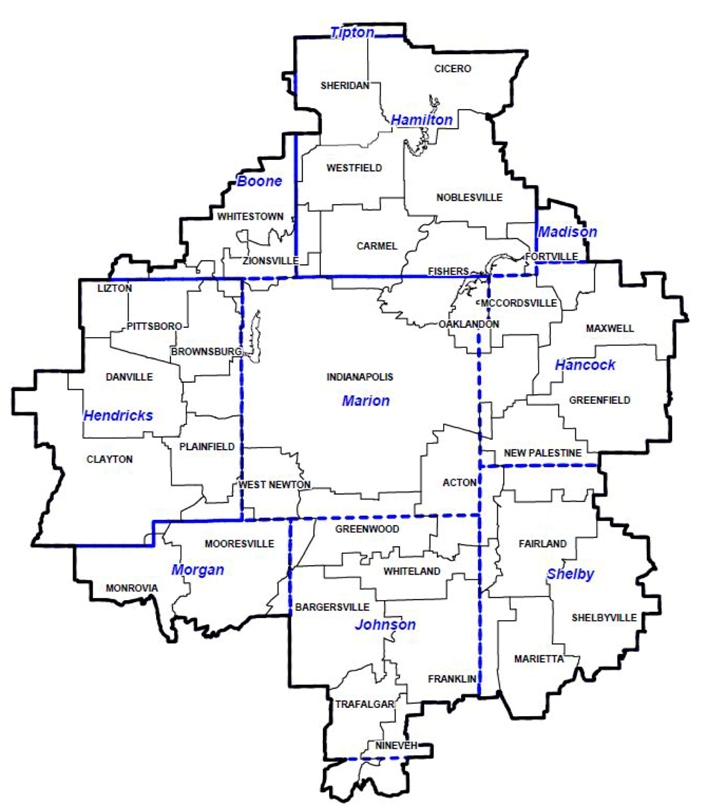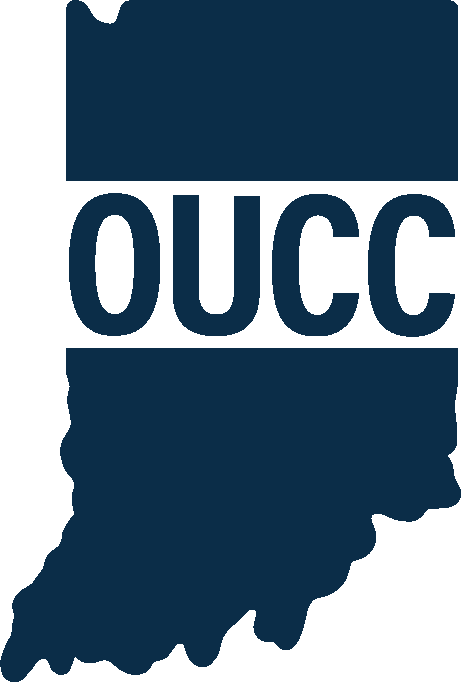
10-digit dialing is now mandatory for all local telephone calls in the 317 area code.
- In other words, you need to enter 317-XXX-XXXX to complete a local call or text.
- A grace period started on March 19, 2016. While the grace period was in effect, local calls could be completed with either 7 or 10 digits.
- 10-digit dialing became mandatory on October 15, 2016, under an Indiana Utility Regulatory Commission (IURC) order. The grace period had been scheduled to end in September 2016 but was temporarily delayed following a request from the Electronic Security Association of Indiana.
The new dialing pattern is necessary so that new telephone numbers can be added when needed. Starting on or after November 15, 2016, new numbers will be assigned using either the 317 area code or the new 463 area code.
- The new 463 area code is needed because of the low supply of available 317 phone numbers. 317 had been projected to run out of available numbers as early as 2003. While number conservation efforts by state government and the telecommunications industry delayed the need to add a new area code for more than a decade, the number supply finally reached the point – in 2014 – of requiring the addition of a new area code.
- All new area codes that have been added in the United States since 2008 have used the “overlay” approach, instead of the geographic split that was primarily used before then. With overlays, consumers do not have to change their existing phone numbers. The new area code is used only for new numbers and services.
- The IURC approved the use of the overlay method for the new code in April 2015, following a 9-month proceeding. The case included a public comment period and a series of 5 public field hearings throughout the Indianapolis metropolitan area. The telecommunications industry and the Indiana Office of Utility Consumer Counselor (OUCC) both recommended the overlay approach in testimony before the Commission.
- 10-digit dialing was introduced in southern Indiana in 2015, with the new 930 area code now overlaying the 812 code. 29 states now use 10-digit dialing for local calls to varying degrees. In four states (Connecticut, Maryland, Oregon, and West Virginia), 10-digit dialing is in effect statewide.
If you have a 317 phone number, your number will not change. But:
- You now need to dial 10 digits (area code + number) for each local call.
- Calls that were local before 10-digit dialing are still local. Rates and local calling areas do not change because of 10-digit dialing or a new area code.
- Toll calls still use 11 digits (1 + area code + number).
- Any 7-digit numbers in fax machines, alarm systems, and other devices and systems need to be reprogrammed to include the area codes.
- Any safety and security equipment, including medical alert devices and alarm systems, must be programmed to use 10-digit dialing. If you are not sure whether your equipment has been properly programmed, contact your medical alert or security provider. Any needed reprogramming should be done immediately.
- If you have advertising materials, signage, stationery, or identification tags with 7-digit phone numbers, they need to be updated to include the 317 area code.
- Calls to three-digit services such as 211, 811 and 911 still work the same as they do now.
Frequently Asked Questions
Q: Why are new area codes and new dialing patterns necessary?
A: Most area codes that existed throughout the United States and Canada in 1993 have needed the addition of new codes because wireless phones, other competitive services and new technologies have used up the original number supplies. The vast majority of new area codes added since 2005 have used the overlay approach, including all new codes added in the United States since 2008.
Q: Why was the overlay method chosen over a geographic split?
A: There is no perfect solution for adding new phone numbers, but experience has shown the overlay to be the least disruptive option. No one has to change to a new phone number. Wireless phones do not need to be reprogrammed. Also, businesses, schools, governmental offices, not-for-profit organizations, etc. will not be as likely to need new signage, advertising, or stationery.
Q: What changed the most in the 317 area?
A: Ten-digit dialing is now required for all local calls. For example, instead of dialing 555-5555 for a local call, you need to dial 317-555-5555 (or 463-555-5555 to reach numbers with the new code once they are assigned).
Q: What changed the least?
A: If you already have a 317 number, you will keep it. Also, area code changes do not change rates or local calling areas.
Q: Will ten-digit dialing raise my telephone rates?
A: No.
Q: If I have a home phone with the 317 area code and get a new cell or second landline phone, could the new phone’s number have the 463 area code?
A: If you get it after the end of the implementation period, it might. After the transition, telephone service providers will still be able to issue any 317 numbers remaining in their inventories. But after the 317 number supply is depleted, new phones – whether wireless or landline – will include the new 463 area code.
Q: Couldn’t the new area code apply only to wireless phones or only to landlines?
A: No. A 1995 FCC order forbids area codes from being applied to specific technologies, citing that doing so could put certain technologies at a competitive disadvantage.
Q: Has anything been done to keep these changes from being needed?
A: While the addition of new area codes has been inevitable for most of North America, number conservation efforts have prolonged the life spans of many area codes. Years ago, the 317 area code was projected to exhaust its number supply by 2003. But conservation efforts by the state and the telecom industry successfully delayed that by more than a decade.
Q: Where else has this happened?
A: 38 states, including Indiana, have implemented new area codes within the last two decades or are doing so now.
Q: How common is the overlay concept, nationwide?
A: All new area codes implemented in the United States since 2008 have used the overlay method. Overlays are now in use in 29 states.
Q: How long will it be before central Indiana needs any more area code changes?
A: The 317/463 region is not projected to need additional area code changes until 2065.
For more information on the 317 relief case:
- IURC/OUCC News Release: 10-digit dialing mandatory this Saturday (10-12-16)
- IURC/OUCC News Release: 10-digit dialing mandatory on Oct. 15 (10-3-16)
- IURC/OUCC News Release: 10-digit dialing grace period reaches midpoint this week (6-15-16)
- IURC/OUCC News Release: 10-digit dialing grace period underway (3-21-16)
- IURC/OUCC News Release: 10-digit dialing starts this month (3-1-16)
- IURC/OUCC News Release: Mandatory 10-digit dialing to start in under a year (9-21-15)
- OUCC Consumer Fact Sheet (Distributed at the Fall 2014 public hearings)
For more information in general:
- OUCC Area Code Fact Sheet
- Frequently Asked Questions (North American Numbering Plan Administration)
10-18-16
